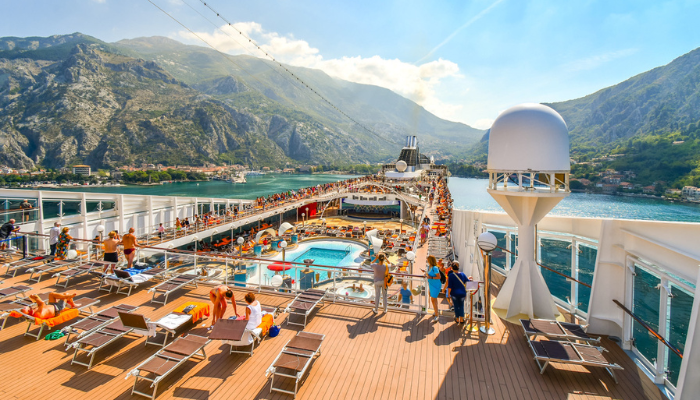
24 Oct Cruise Prices Surge 43% as Travel Rebounds After the Pandemic
Cruise travel is undergoing a substantial revival after the COVID-19 pandemic, leading to ticket prices reaching remarkable heights.
Well-known cruise operators like Royal Caribbean and Carnival have set ticket prices at levels even higher than pre-pandemic rates, with some reports indicating an increase of over 40%. Experts in the industry suggest that prices may continue to rise.
Data from Cruise Critic, a cruise review site owned by Tripadvisor and reviewed by CNBC, reveals that the average price for a five-night cruise in the Caribbean this December will cost travelers $736 per person, an astonishing 43% higher than the rates observed during the corresponding period in 2019, this also signifies an almost 37% uptick from the prices in the previous year, a time when cruises were shunned due to worries about acting as potential “super spreader” gatherings.
Former Carnival executive, Carlos Torres de Navarra, stated that coming out of the pandemic, cruising was among the last travel options to be considered safe. As a result, vacationers swiftly recognized that the costs of airfare and accommodations at land-based resorts had surged, whereas cruise prices were just beginning to rise.
While cruise lines, like many other industries, have had to implement price increases, vacations aboard cruise ships seem to offer a degree of recession-proof discounts. According to de Navarra, travel agencies have quoted discounts ranging from 50% to 70% compared to land-based vacations.
The rising popularity of cruises is attracting many first-time American cruisers, expanding the market and giving cruise lines the opportunity to increase prices. As de Navarra explained, over 70% of the U.S. population has never been on a cruise before.
Despite concerns about the increasing cost of oil, de Navarra pointed out that it is not the primary factor driving these price hikes. Cruise lines are now focusing on markets closer to the U.S., such as the Caribbean and the Bahamas, where the distance traveled requires less fuel.
Projects like the Calypso Cove development in Long Island, Bahamas, offer economic benefits to cruise lines. They feature standard amenities like retail outlets and beaches with cabanas but cater to operators who can generate revenue with on-shore activities without extensive port development costs.
Azul Destinations’ Calypso Cove, with funding assistance from merchant bank AMA Capital Partners, is set to receive up to 1 million passengers annually from various cruise lines, marking a shift in the industry’s focus from cruise experiences to destination experiences.
Despite the challenges, including the significant debt cruise operators acquired during the pandemic, de Navarra remains optimistic. He is confident that the increased ticket prices in the cruise industry will expedite the repayment of this debt.


